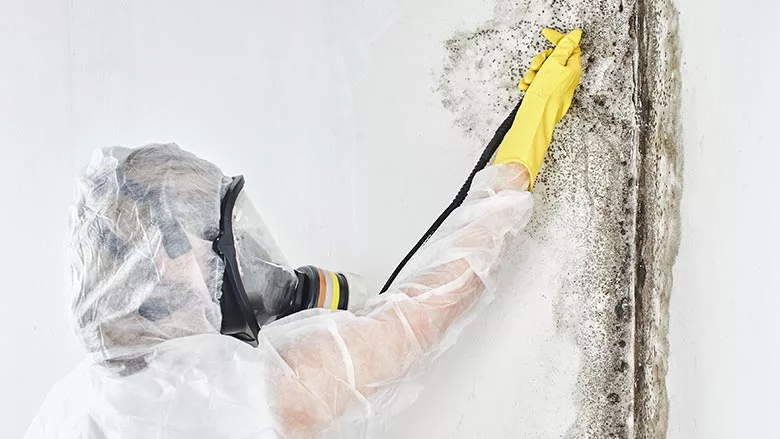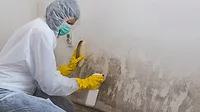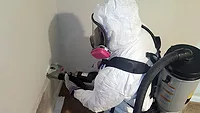Understanding Odors: Essential Knowledge for Industry Professionals
This article stinks!

Photo: PonyWang / E+ via Getty Images
Quick overview:
What is an Odor? In many ways it is job security in the cleaning and restoration industry. The worse it smells, the more someone is willing to pay you to resolve it. Odors emanate from a variety of sources: smoke (incomplete combustion), decomposing organic materials, water damaged materials, sewer gas and even cooking odors from long-term tenants. For an individual to smell something, molecules/gases from those sources must enter your nose and attach to the olfactory receptors, which then will transport that gas or sensation to the olfactory bulb/lobe. The olfactory bulb/lobe will then determine whether it is a good or bad odor based on experience, sensation, knowledge or suggestion.
Tony Macaluso CR, CMRS comments about the oldest issue since the invention of carpet cleaning: the dreaded odor of urine. Today, we have an assortment of chemicals and equipment that makes our task resolving urine odors much easier, however, many technicians still fail in dealing with urine.
They don’t adhere to the basics when dealing with urine in carpets. First, what is the carpet’s face fiber and its characteristics? Is it nylon, polyester, wool, etc. giving them an idea as to their ability to successfully remove the visible spot? Second, what is the pH of the urine deposit? When urine leaves the host, be it animal or human, it is on the acid side of the pH scale, but as the water evaporates and with time it transforms to an alkaline pH. Third, what has the owner attempted to do to remove the urine spot with local store-bought products, which greatly affects their abilities to remove the visible spots?
To succeed an Odor control technician must ask the right questions, look in the right place(s), in essence become a private investigator to select the right approach/process to eliminate the odor. With that said technicians must not let the client influence their investigation. Individuals often look for a magic solution, the spray, pray and run-away silver bullet. They look to television ads, social media and trade shows for these silver bullets which promise simple, inexpensive solutions but often lead to unsuccessful results, unhappy customers and frustrated technicians.
Remember, there is not one chemical or piece of equipment that eliminates all odors, Odor removal often requires a combination of techniques following the Principle of Odor Control i.e., source removal, cleaning, recreating the conditions of odor penetration and sometimes encapsulation (sealing) of surfaces.
Mark Cornelius discusses odor in a specific case study. The word that can not be spoken… It goes by many aliases: fuzz, cheese, staining, discoloration, suspected microbial amplification and mildew. The secret guest is called MOLD. It is often confused with any “odd” odor not easily identified, especially in a water intrusion-impacted built environment.
Mark was recently involved in a discussion on Facebook (FB) about odor being part of the investigation of possible mold in a structure. One response challenged him and asked if we are mold mitigation contractors or odor remediators. His response was, “yes, yes we are.” A big discussion was spurred about odor being part of mold inspections and if air samples came back low then there isn’t an issue. I pointed out that odors are gases which are far smaller than spores and that the nose detects odors whereas air samples detect particles.
The difficulty with odor is that no two noses are the same. Odor is subjective and depends on the owner of the nose to analyze the amount and intensity of the data present in the room. A client recently contacted Mark about her suspicions of mold in her daughter’s basement apartment. The daughter was stating that she thought she could smell mold and was having allergy-like issues. The mom said she could not smell anything.
During the inspection Mark personally thought he could smell a faint musty smell, but there were no visible signs of microbial amplification. He then asked for permission to perform invasive testing in areas of potential water intrusion. Just like a good detective he rounded up his usual suspects. During the inspection several areas of microbial growth were discovered leading to a remediation scope and protocol. Once the mold was removed and the source of moisture fixed the odor was also gone. Musty smell means microbial activity, which means sufficient water activity.
All odors are removed following the same four (4) principles of odor control.
- Removing the source (this often means finding it)
- Cleaning the source area
- Recreating the conditions
- Sealing if needed
The issue is that most OCTs today do not understand the thrill of the hunt and the art of mastering the pursuit of success. Everyone is looking for the magic bullet, the one-step solution, the no-sweat option. If odor control were that simple, then everyone could do it and we are not needed. OCTs want to do step one (1) and four (4) or skip them altogether and just spray a magic potion. Why do you think most homeowners call you after trying all the magic bullets they saw on television, FB, TikTok, Snapchat? Because they don’t work. They are doing the same thing you are which is why you often fail.
Rashelle Cornelius and Mark recently looked at another “musty” smell on Dec. 13 where the client said she was having major issues and felt that she was being taken advantage of by several “experts.” She found Rashelle and Mark through the IICRC. She had two AFDs in her home and personally fogged her home with a magic potion after four (4) companies had danced their dances. Using visual clues and odor tracking, multiple issues were found. Unfortunately, now she has many areas that require source removal and cleaning. Then the odor can be reassessed.
Training is vital for mastering the intricacies of odor control in the restoration industry. It's recommended that technicians pursue continuous education to stay updated on the latest techniques and technologies. For those specifically interested in tackling odor issues, attending an IICRC OCT Certification course is highly recommended.Looking for a reprint of this article?
From high-res PDFs to custom plaques, order your copy today!










